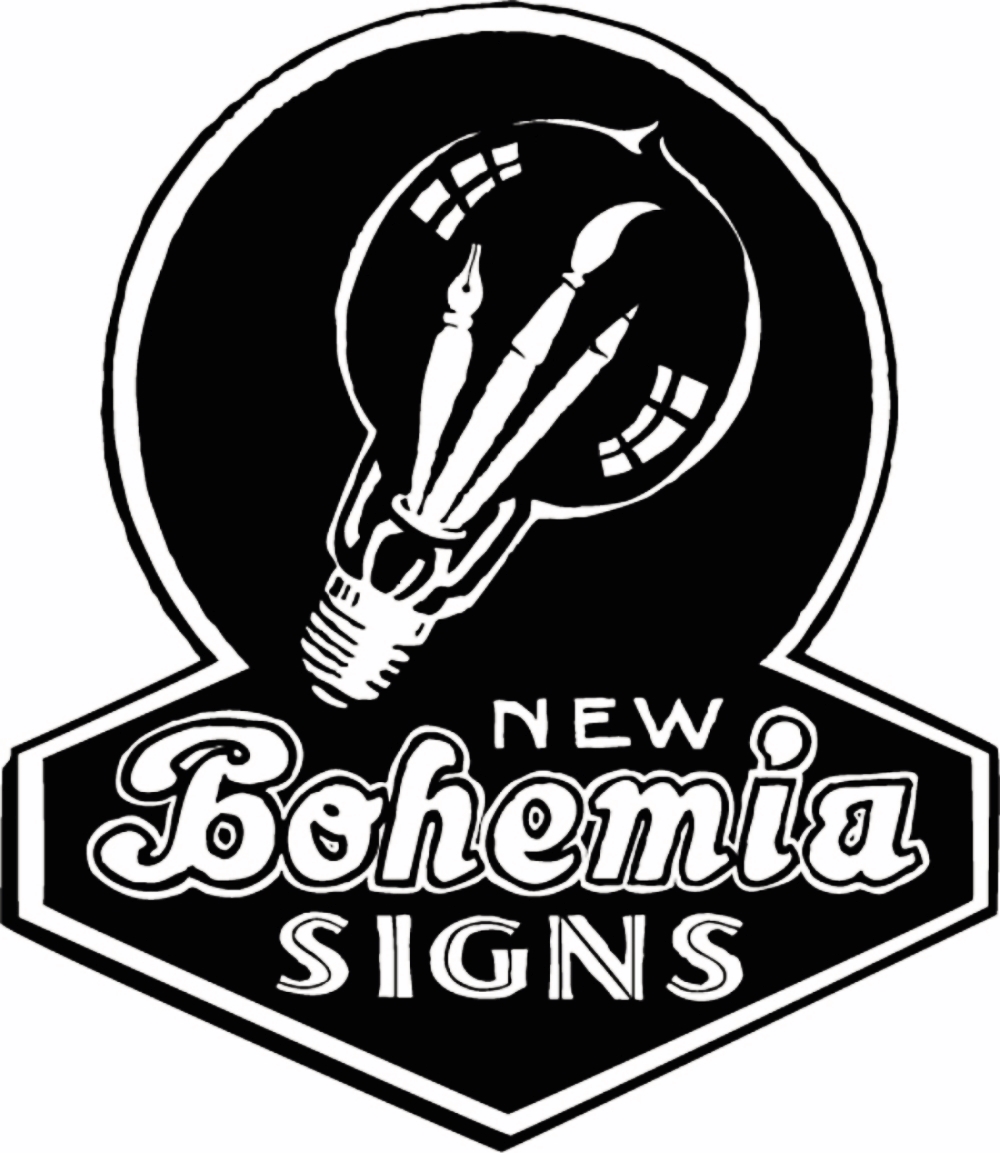I got the patterns done yesterday, as mentioned in the previous post, and today, Ken, Josh & I spent a long day painting them on the walls of the new place, interrupted only by a delicious lunch on Tony's pizza (the boys got their typical vegan fare, and I had a "Cal Italia", with prosciutto, gorgonzola, shaved parmigiana, a drizzled balsamic reduction, and dollops of fig preserves--I highly recommend it). So, I'll walk you through a bit of how we did this. I pasted the scanned sketches onto an Illustrator document, and did my best to duplicate them with vectorized shapes:
I started with the Chicago wall, because it promised to be easiest. I searched my Linotype Font Explorer X library, through my set of "rectilinear bowls", for something approaching the shape of the "Chicago" letters, and settled on DIN Mittelschrift. I spaced and kerned the word to my satisfaction, then built new letters over top, using fat round-ended strokes and circles, outlining the strokes, dividing and combining them into letters that matched my sketch. I built the inline feature using tricks gleaned from Leslie Cabarga's Logo, Font & Lettering Bible (a valuable resource for digital neophytes like me, provided one can avoid judging it by its gruesome cover). For the other lines of text (on all three walls) I pulled Magnesium out of my "thick 'n' thin" set, because I like its proportions, and it's easy enough to ignore the oblique terminals on the crossbars. I sheared some of the text (and the sausage-on-a-stick) vertically a few degrees, and sheared the rest of it horizontally, and messed with the shape and size of the exclamation points.
For the "New York" wall, I found a font in an album of 19th century printers' catalogs (given me by Ken, for my birthday, last week), which shared a few characteristics with my sketched ideas, and improved on some other characteristics. It was Font #1,566 from the Bruce Type Foundry. I scanned and vectorized it, then cleaned up and altered what needed letters I could find, inventing the rest--these old catalogs tend not to print entire alphabets, preferring to rattle off enigmatic phrases, like "FASHIONABLE MANUAL Directions for Respectable Sponging Indispensable to Diners-Out", which doesn't contain the W, Y or K that I need for "New York Delicatessen".
For the "Slice House" wall, I sifted through my "Westerns" set for a condensed font with thorns and flared serifs, and settled on Pointedly Mad. Its strokes are far too fat, and its serifs too slabby, to bother trying to manipulate digitally into a usable pattern, but it's close enough, with a little stretching, to the proportions of the letters in my sketch, that I can use them as dummy letters. It's easier to fiddle with kerning digitally, as well as to bend the text into a symmetrical arch. Then, once printed, I can scribble all over the outlines, adjusting the letters at whim, before perforating the pattern. I can also add all the swirly foofaraw around the edges, based on elements of Tony's menu, which are a lot easier to render gracefully with the arc of an arm than with a finger stroke across a touch pad (as evidenced by the crude effort in the mock-up, above).
This has become a very satisfying way I've developed, of using the digital editing and printing technology I have at hand, to relieve much of the tedium and erasure involved in letter spacing; and using my comfort and familiarity with pencil-based design to spare myself the soul-sucking drudge of building designs digitally. So long as a customer doesn't need a digital version of a sign design, like for future printing purposes, this hybridized pattern-making process helps me feel like I'm making the fullest use of what I do best.
I wasn't able to take the still camera with me today, but I had my Flip cam on hand. Here are some action shots I got, of the boys stroking out some letters, while I waited for Scott to drop off the extra pounce powder we'd neglected to pack, and then, of the work, in a more completed state:
Toward the end of the day, I learned from Tony that his new venture was featured in today's Inside Scoop, the restaurant news section of the SF Chronicle, and of their web version, SFGate. Since the space is still under construction, he forwarded them the sketches I'd sent him last week, and they printed them right in the story, albeit with some kind of weird coffee stained parchment texture over top. They also included a portion of the Doug Hardy drawing that I'm going to start painting in a panel in the entry way of the restaurant, tomorrow.

